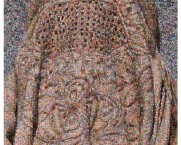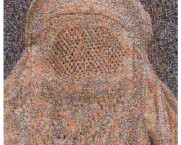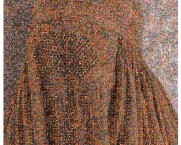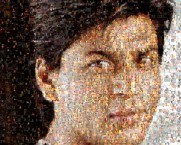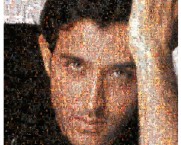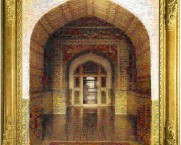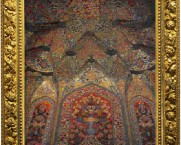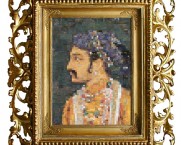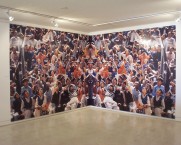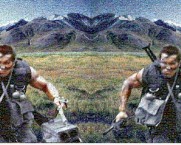C&L Shows
Recent Work of Rashid Rana
Rashid Rana
2005
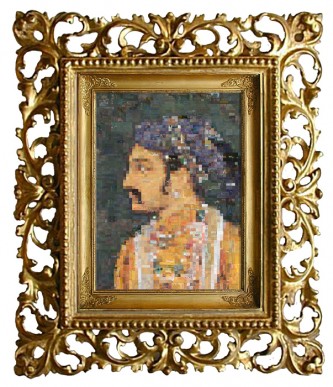
Overview
Of the new crop of Pakistani artists – Pakistan’s YBA’s – Rashid Rana is indubitably one of the most arresting. Over the past five years he has built an oeuvre that is as formally inventive as it is thought provoking. Every few years Rashid takes up a new medium or a method of working, teases meanings out of it and then discards it for something else. Thus there are the acrylics on canvas, slick triptychs that look like enormous photographic negatives; the punning texts on textiles; the collaborations with hoarding painters; the performative photographs and videos; and most recently the digital/compound prints.
In each case the medium is integral to the message. It is chosen as a cultural and historical referent and in working in that medium Rana is working through it, its history and its location. I suspect that most times Rashid is the third or fourth or tenth person among his peers to seize upon a particular material or mode. But the point of using that method then is to engage with its history; he becomes a commentator instead of being an imitator. In his work one can see parodic references to so many trends in post-Independence Pakistani art. The work in which he combines English and Urdu to form the question: What is so Pakistani about this Painting? must be a reference to the calligraphy-in-oils that was favored in the Zia years but it also mocks the idea that there is such a thing as ‘Pakistani Painting’ (while simultaneously producing one of its icons). It also uses the found object in the spirit of Karachi-pop, thus engaging with one of the major trends in Pakistani art. And his I Love Miniatures, in which a portrait of Shah Jahan is digitized and re-composed from a collage of contemporary advertisements, makes an irreverent gesture towards the contemporized miniature paintings from Lahore that have become the international brand ambassadors for art from Pakistan.
Referring to his use of found objects and quotations, Rana says “Nothing in my works is original. Everything is a quotation, everything is borrowed.” The artist flaunts his self–effacement through a progression of borrowings — of images and objects. He has made paintings that look like somebody else’s photographs; purchased textiles from the local markets and presented them as his canvases; designed hoardings to be painted by a commercial painter. One expects Rana is making the usual philosophical points here: about the death of the author; the impossibility of being original in this image-saturated, information-overloaded age; the falsity of the Romantic image of the artist as singular, creative, heroic, individual.
An excerpt from Between the Part and the Whole By Kavita Singh

